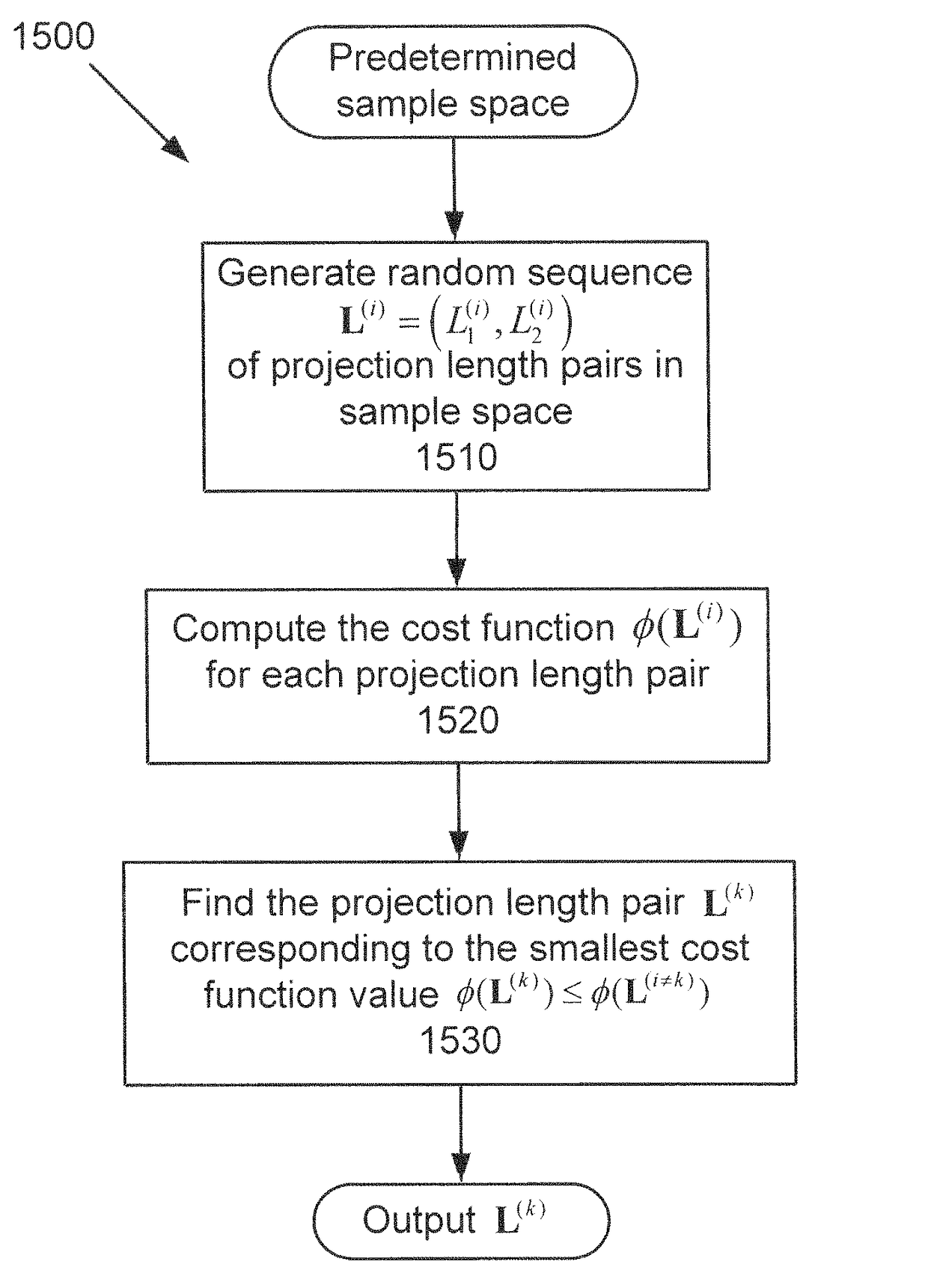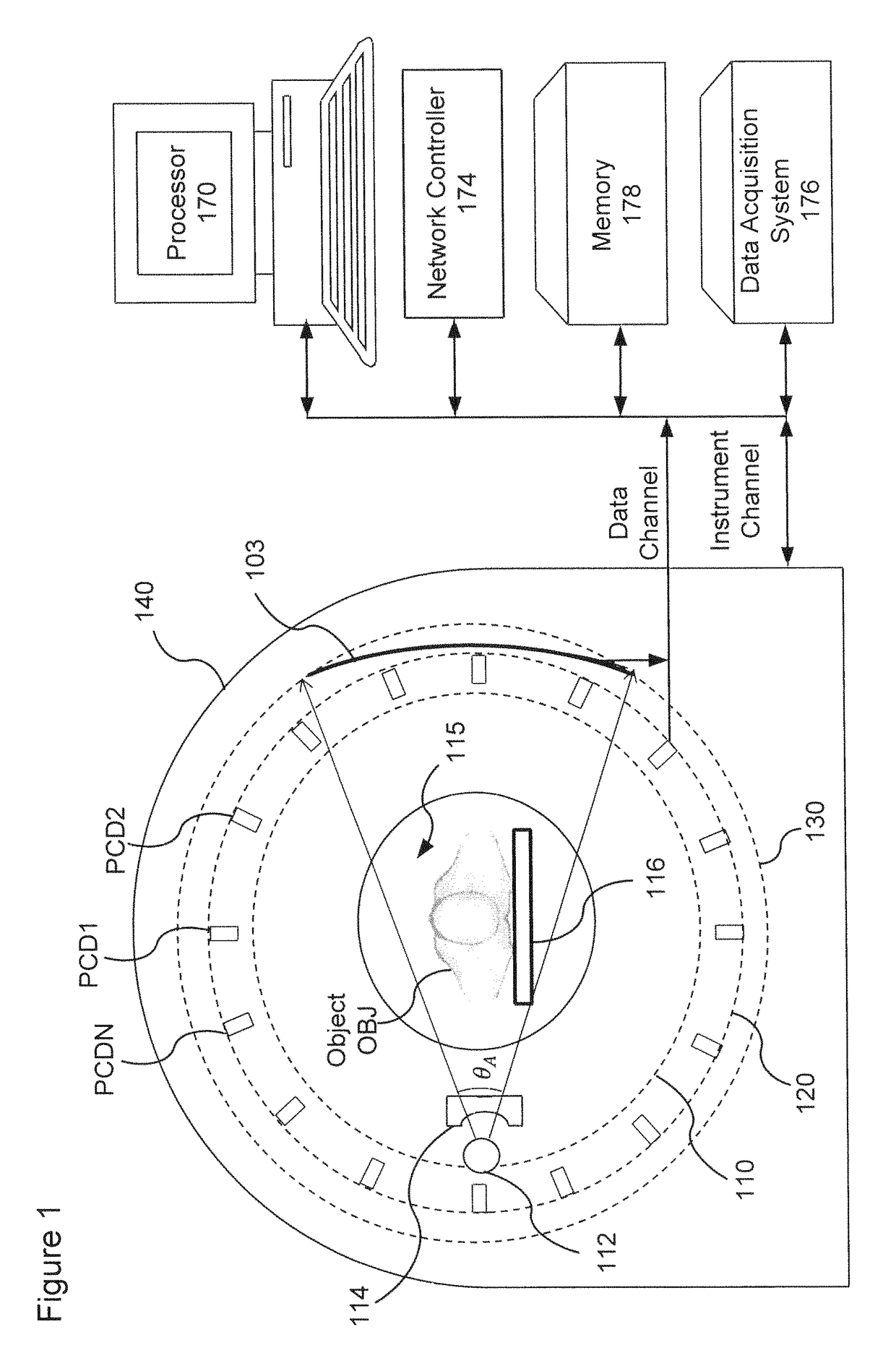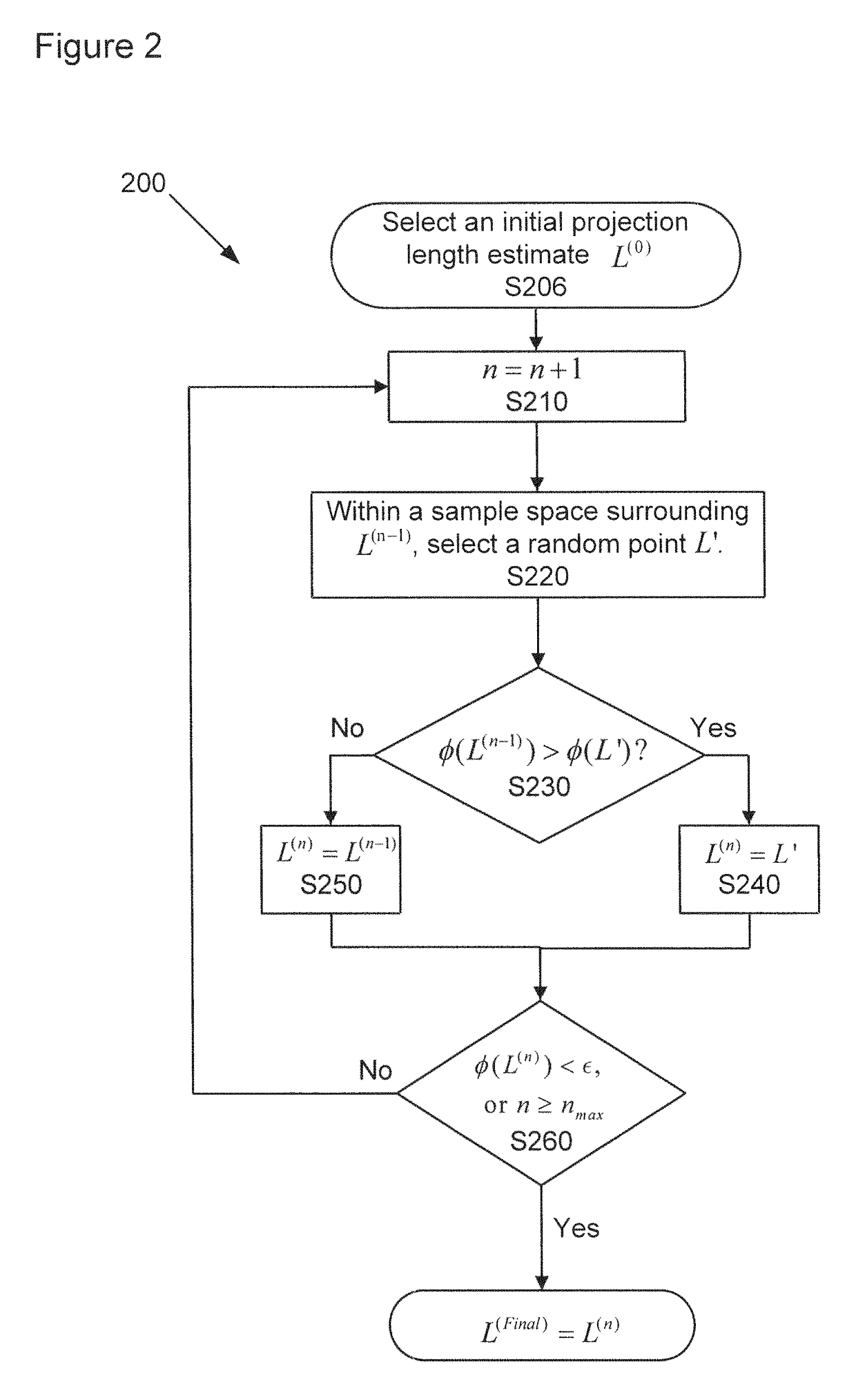More efficient method and apparatus for detector response correction and material decomposition of projection data obtained using photon-counting detectors
a detector and detector technology, applied in the field of spectral projection data, can solve the problems of complex problems, poor image quality of images reconstructed from semiconductor-based pcds,
- Summary
- Abstract
- Description
- Claims
- Application Information
AI Technical Summary
Benefits of technology
Problems solved by technology
Method used
Image
Examples
Embodiment Construction
[0037]In spectral CT using photon-counting detectors (PCDs), image reconstruction is preceded by preprocessing steps including correcting for the detector response and material decomposition. In certain implementations, it can be beneficial to perform several of these preprocessing steps in combination.
[0038]For example, correcting for detector response and the material decomposition can be solved simultaneously by finding the projection lengths of materials 1 and 2 best satisfying the detector response equation, which is given by
Nm=T∫dE(SLin(E)+SNonlin(E))Wm(E)
wherein Nm is the number of counts of the mth energy bin of a PCD, T is the integrating time, Wm(E) is a window function representing the detection spectrum of the mth energy bin (i.e., Wm (E) gives the probability-density that a detection event of energy E is recorded in the mth energy bin), SLin(E) is the linear response of the PCD, which is given by
SLin(E)=ne−nτ∫dE0R0(E,E0)S(E0),
SNonliin(E) is the nonlinear detector respon...
PUM
| Property | Measurement | Unit |
|---|---|---|
| total energy | aaaaa | aaaaa |
| irradiance | aaaaa | aaaaa |
| length | aaaaa | aaaaa |
Abstract
Description
Claims
Application Information
 Login to View More
Login to View More - R&D
- Intellectual Property
- Life Sciences
- Materials
- Tech Scout
- Unparalleled Data Quality
- Higher Quality Content
- 60% Fewer Hallucinations
Browse by: Latest US Patents, China's latest patents, Technical Efficacy Thesaurus, Application Domain, Technology Topic, Popular Technical Reports.
© 2025 PatSnap. All rights reserved.Legal|Privacy policy|Modern Slavery Act Transparency Statement|Sitemap|About US| Contact US: help@patsnap.com



